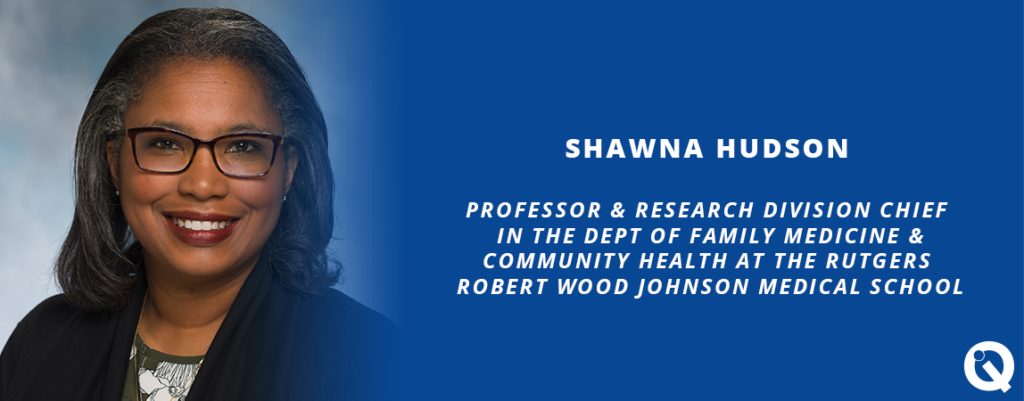Shawna Hudson is Professor and Research Division Chief in the Department of Family Medicine and Community Health at the Rutgers Robert Wood Johnson Medical School. She will deliver the keynote speech at the Quality Institute’s Winter Conference.
As an internationally known medical sociologist specializing in primary care research, can you give our readers a preview of the topics you will explore at our winter conference?
I am a committee member and part of the group that created the National Academies of Science, Engineering, and Medicine report on implementing high quality primary care. Some of the issues I’ll talk about will be around patients within the context of their communities and within the context of their health care. So really the concept of whole person care and the ways in which the report really puts that out there. I’ll talk about how the report reframes the way we talk about patient-centered care and how we are moving toward the whole concept of how people are connected to their communities.
How does having a strong system of primary care reduce health inequities?
Primary care is the way that we all come into the health care system, hopefully. And so having a strong system allows for more equitable access for everybody. Having access to primary care from childhood — all the way up into adulthood, and then as we grow older — is important to making sure that everybody has their preventive care needs addressed as well as acute issues that may come up. Primary care is the great equalizer in the system. It’s the way we enter the health care system and the way we achieve continuity of care as we age.
What is “team based primary care” and why is it an essential element of high-quality primary care?
Team-based care is an essential element of high-quality primary care. And when we talk about team-based care, we’re talking not only about the physicians who are acting as the primary clinicians, but also the nurses, the physician’s assistants, the medical assistants — all the people who work with the data and then also the financial pieces. That entire practice is really a team. You can’t have a fully functioning team without having all of those folks working at the top of their licenses. The concept of team-based care is moving away from focusing on just the doctor as the most important person to thinking about the whole team that’s managing each person’s care.
How has the COVID-19 pandemic has altered your views on the future of primary care?
The pandemic crystallized how important strong primary care is to our basic public health, particularly as we watched the response to the vaccine rollout. There was not a huge presence of primary care in that initial rollout of vaccines for adults. We saw a level of distrust. And we’re now seeing primary care become part of the rollout for children. The rollout for children is in context of relationships that are trusted. And a lot of the people that we interviewed for our research during COVID talked about not having a trusted relationship with a provider — and being concerned about going to these mega sites. The pandemic crystallized for me the importance of the relationship between patients and their healthcare team and being able to access the team in moments of crisis.
I was part of a large study funded for $5 million from NIH on COVID testing and vaccine. As part of that research, we published a paper in JAMA Open Network where we talked about people’s concerns about vaccines and lack of trust with information sources. One of the things we heard was, “Why can’t I get this at my doctor’s office?
Finally, we like to learn something about the people we interview beyond their professional lives. Where might we find you on a day away from work.
I’m the mother of a 15-year-old and a 19-year-old. My 15-year-old is at home so on those rare days away from work you would find me going around to lots of her different activities, such as dance and some other fun things.

